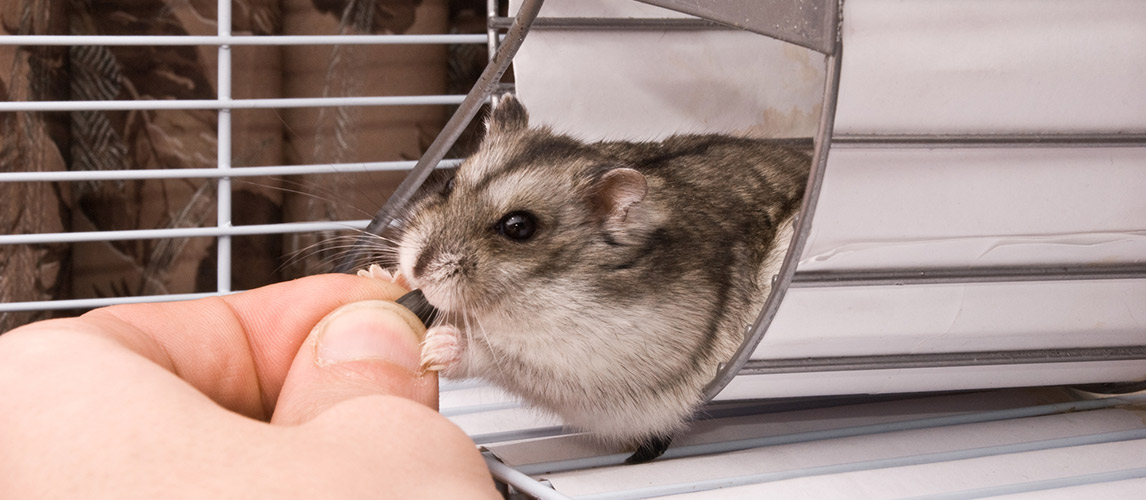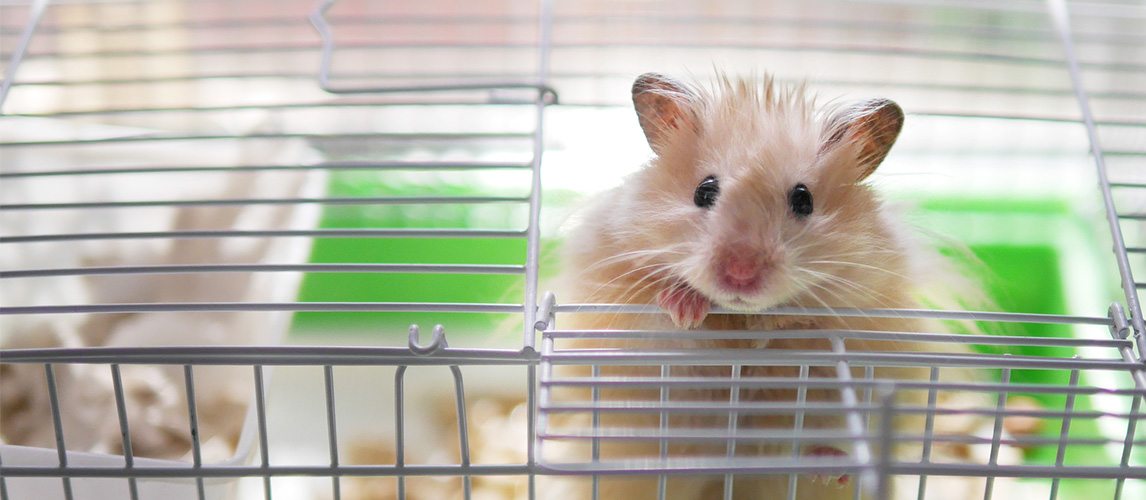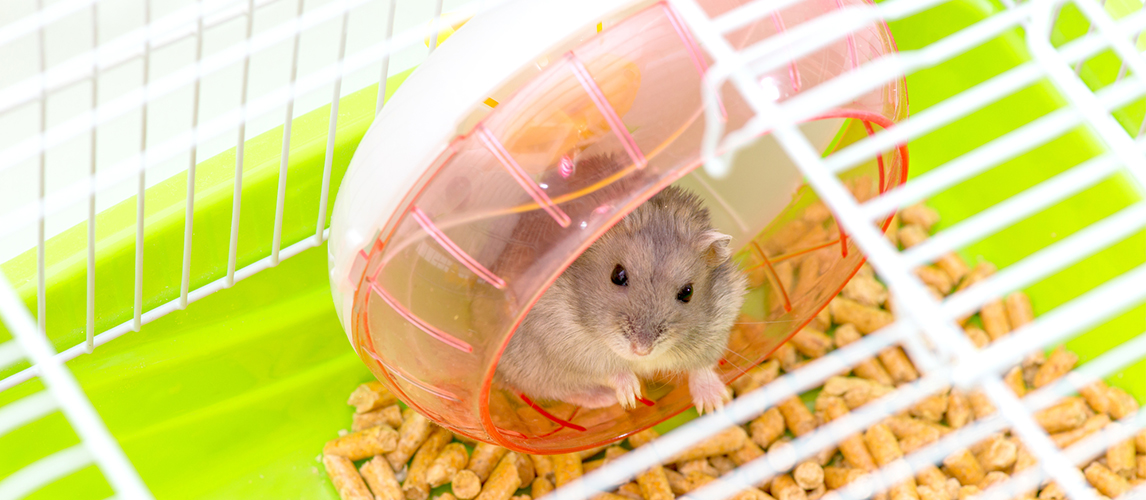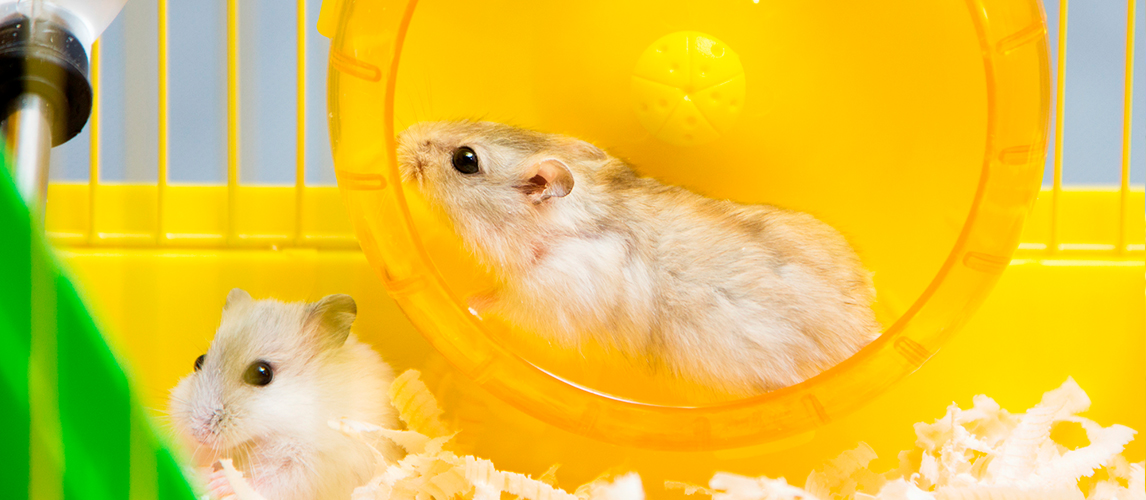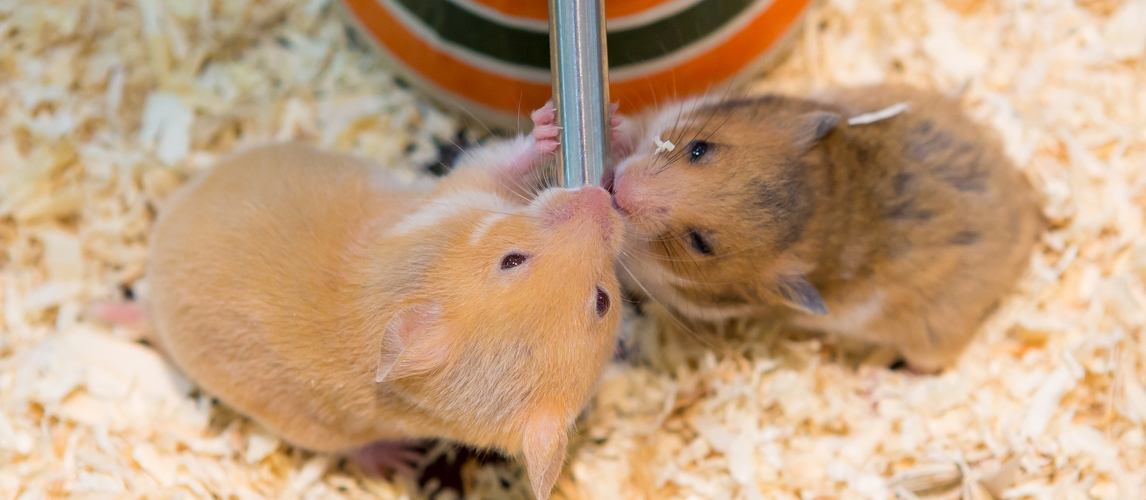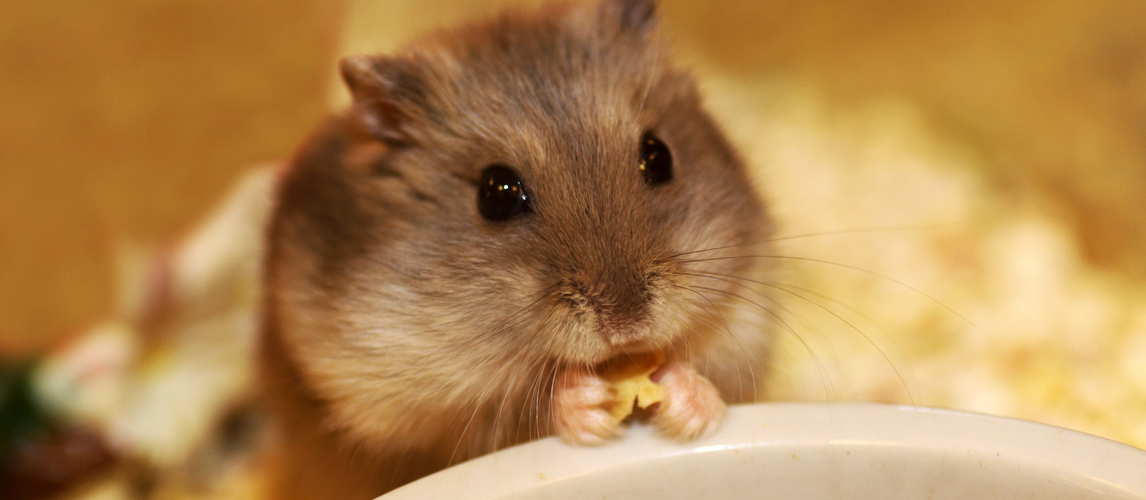If you’re thinking of getting a miniature hamster, you may want to look into exactly what owning one would entail. Getting any pet is a big responsibility, they may be tiny, but they require plenty of care and attention so that you can be sure you’re giving them the kind of life they deserve. We’ve decided to put together a nifty guide to give you all the essential information you’re going to need to know how to take care of a dwarf hamster.
What Are Dwarf Hamsters?
Many people mistake dwarf hamsters for being one species, however, the term “dwarf hamster” actually describes a small group of tiny breeds. These miniature hamsters are predominantly native to desert regions across the globe and are quite scattered. These hamsters are generally more social than their larger cousins, and less territorial, thriving in small groups or pairs as opposed to being left alone.
As pets, these tiny creatures are quite friendly and docile creatures, meaning they do quite well with human contact and being handled, so long as it is done with care. If you’re not overly confident in handling your little friend, don’t worry, they’re an equally entertaining pet to watch as they run about their enclosure, enjoying their exercise wheel and taking a dust bath.
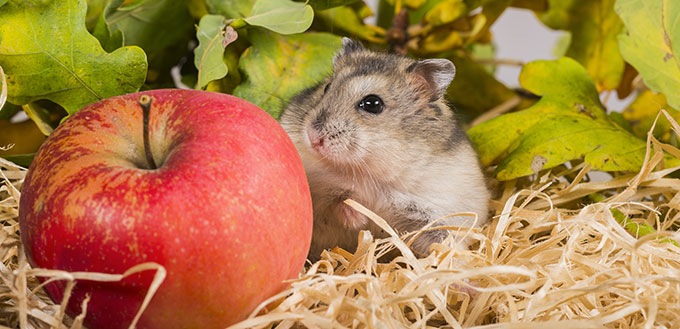
The Different Dwarf Hamster Species
The term “dwarf hamster” is primarily used to describe the three species that fall with the genus of hamster, Phodopus Campbelli:
Campbell dwarf hamster: Originally found in Mongolia by Oldfield Thomas in 1902. The Campbell hamster’s natural habitat is the steppes of eastern and central Asia and is capable of burrowing anywhere up to 3 feet underground to stay cool in the hot sun.
Russian dwarf hamster: Otherwise known as the Winter White dwarf hamster, or Djungarian hamster. In the wild, this breed originates from, the meadows of Syberia and Mongolia, the wheat fields of Kazakhstan, and the birch stands of Manchuria. The Winter White dwarf hamster changes its color throughout the year depending on the length of the day.
Roborovski dwarf hamster: Also known as the Desert hamster. The Robo dwarf hamster is the smallest in the Phodophus genus and, much like the Campbell, lives in the deserts of Central Asia. The defining characteristic of the Roborovski breed is the small eyebrow-like white markings above its eyes and the absence of a dorsal stripe. The Roborovski hamster is the most common breed found in pet stores.
Chinese dwarf hamsters are often mistaken for being one of these mini rodents thanks to their name, however, the Chinese dwarf hamster is not technically a dwarf breed at all. They simply have the name because of their smaller stature when compared to other pet hamsters. So if you’re looking to get this tiny animal, whilst they may be small, they are not the answer to the question of which breed to get.
Fun Fact: The term can also be used to refer to species that are part of the Cricetulus genus as well as Phodopus Campbelli; Tibetan dwarf hamster, Sokolov’s dwarf hamster, Kam dwarf hamster, long-tailed dwarf hamster, Lama dwarf hamster, grey dwarf hamster. Phodopus Campbelli hamsters are the lesser-known dwarf breeds.
Housing a Dwarf Hamster
In order to provide your dwarf tiny pet with the ideal living conditions, you need to ensure that the habitat you choose is the correct size. Ideally, you will need a space that measures 1 ft x 2 ft at the base with at least a foot in height. If you decide to get multiple of these miniature hamsters, you will need to consider getting a slightly larger enclosure so that they are not walking all over each other.
Enclosure Choices
You can often purchase a suitable enclosure from local pet stores, however, if you cannot find one of the appropriate size, you should ensure that you locate a correctly sized enclosure before committing to having these as pets. There are a couple of different styles you can choose from:
- Aquarium Style: Often made from glass or plastic, an aquarium-style habitat allows you to see your pet clearly and removed and risk of escape. Additionally, aquarium-type habitats protect your dwarf hamster against drafts. However, it is imperative that you not leave the enclosure where the sun can get to it, as it can easily overheat, even with the built-in ventilation.
- Wire Type: Wire habitats are ideal for better airflow and ventilation, though this can mean drafts getting in. Household temperatures are important with a wire cage, as the ambient temperature of the room will become the climate your tiny companion gets used to. You must also be sure you find one where the wires are close enough together that your dwarf hamster can’t squeeze between the bars. They are natural escape artists, so you’ll want to go quite close-knit in the design if you want to avoid the possibility of an escape.
Bedding
You should aim to cover the bottom of the cage with 1-2 inches of bedding material to keep your hamster warm and comfortable. Try to aim for dye-free and chemical-free shredded paper or something like hardwood shavings. The bedding in their habitat will need to be changed every week, so it would be worth picking a day that best suits you. When you are changing the bedding material, be sure to completely empty out the enclosure and clean it down with hamster-friendly soap and water. If you have a hamster ball, this would be perfect for keeping your little furball entertained whilst you are cleaning out their enclosure.
CAUTION: Please ensure that if you choose to purchase bedding made from wood shavings that you avoid cedar-based material. Cedar can be toxic to small animals and potentially cause health complications.
Entertainment
Every enclosure at the very least should have a hamster wheel. They are very active animals, hence their requirement for space, and a hamster wheel gives them the opportunity to run as fast as their little legs will carry them. In this article, we have also provided information on the best way to exercise one, which is essential to dwarf hamster care.
Hamster incisor teeth are constantly growing, so you will need a way for them to wear them down and keep on top of their length over time. Mineral chews and hamster-safe wooden chew sticks tend to be great choices for this mini rodent’s enclosure, thanks to how hard they are. Though mineral chews are not essential for aiding their diet, properly balanced food should be just fine for keeping your tiny pet healthy.
Last but not least, include a small sleeping hut or nest for your hamster to be able to hide away in to rest. This will help them to feel much more secure, as they are commonly nervous pets.
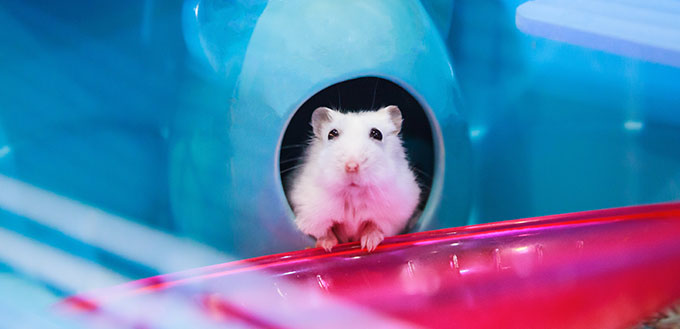
Exercising a Dwarf Hamster
They are nocturnal creatures, so they do most of their exercising at nighttime. However, if you manage to capture your little furry friend in a lively moment there are a few ways you can help them to get some exercise:
A Hamster Ball
Popping them into a hamster ball to give them the chance to explore and stretch their legs is a fantastic way to give them a healthy amount of exercise. If you are unsure of how much exercise to give your tiny buddy, don’t hesitate to ask your veterinarian for a bit of advice, or even experts at the pet store.
Use Your Hands
Some people even have their hamsters running around on their hands, which can be a great bonding experience between owner and animal. Allowing your hamster to climb over you builds up the hamster’s confidence with their person, making enclosure cleaning and general care and maintenance far easier for all involved.
Things to Explore
It never hurts to provide them with some extra play space inside their habitats, such as tunnels, ramps, and platforms to clamber around on. Not only is this a great means for entertainment, but enticing and intriguing structures to climb around on will encourage your fluffy friend to move around more frequently, giving them good varied exercise.
Feeding a Dwarf Hamster
Always ensure that there is always a full bottle of fresh water and a bowl of food available for your hamster. Keeping their water fresh is extremely important, as the issue of stale water can cause severe health problems such as gastroenteritis. If you are worried that your little pet may have stomach problems as a result of drinking unclean water, be sure to contact your veterinarian for advice.
You should feed your hamster at a later time, like just before bed, rather than in the morning. This is because hamsters are naturally nocturnal and will become active at a later time of day, so feeding them late is actually just in time for their breakfast. Any uneaten food should always be fully replaced after 24 hours to avoid the build-up of harmful bacteria.
There are brands of food that are specifically designed for swarf hamsters, with the correct vitamins and minerals to keep them healthy and strong. This can be found online for delivery or at your local pet store, don’t be afraid to ask for guidance if you are unsure. As a treat, you can give them limited amounts of fruits, grains, oats, vegetables, seeds, and nuts, though this should be limited to around 10% of your hamster’s overall diet.
Sugar and high-fat foods should always be kept to the bare minimum when creating a healthy hamster diet in order to avoid unnecessary weight gains, such as avocado and almonds.
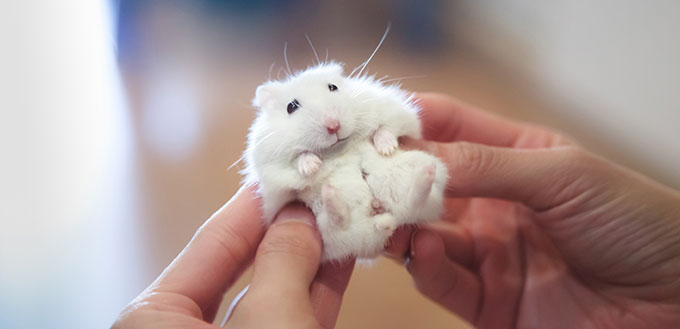
How to Handle a Dwarf Hamster
Taming a dwarf hamster can be tricky as they are skittish, jumpy, and standoffish to start with. Patience is key, it is best to approach your new mini hamster with caution, treat it as you would training a dog. Once you guys have developed a bond, you will then need to continue to handle your miniature hamster on a regular basis in order to keep them comfortable and tame.
- A small empty vessel: using something like a clean empty cup can be a happy medium if you have a particularly nervous hamster. By placing the cup in a place that your hamster is likely to climb in, you can then scoop them up and remove them from their enclosure. This is particularly helpful for hamster pets that don’t like to be moved during habitat cleaning time.
- The scoop and cup method: This is better for people that have calmer hamsters. By placing your hand down into the habitat in a scooped shape you are providing them with a more secure platform. The scooped sides help them to feel less like they are going to fall when you begin to move. You then bring your other hand to the one picking up the hamster and create a deep “bowl” shape with both hands so that your hamster can feel secure on account of the shielded sides and the warmth of your skin.
- Hand walking: If you have a hamster that is more confident and likes to explore, you can always give them a bit more space to explore whilst you’re handling them. That means collecting them up out of their enclosure, always placing your hand down first and letting them come to you, then flatten your hand out and let them walk. Once they start moving bring your other hand up to meet them so that they can continue walking, once they have cleared the first hand move it in front of them again and continue doing this (like a treadmill). Never handle your hamster like this high above the ground, in case they fall.
Grooming a Dwarf Hamster
Most people go into owning a dwarf hamster with the assumption that you need water to bathe them, when in fact all you need to groom your one is a dust bath. Generally speaking, hamsters are very clean pets and spend a lot of their time grooming themselves – much like cats. So purchasing a dust bath is not strictly necessary, however, it is a luxury that your little buddy would very much appreciate.
Though dwarf hamsters do indeed take care of themselves, meaning you shouldn’t need to brush them, a dust bath helps them to maintain the condition of their fur. Sand helps them to remove excess grease and grime from their coats.
It is also worth noting that a good healthy diet will help to keep your hamster’s fur in check. If their fur appears to be falling out, matting easily, or overly greasy, they could have developed a skin condition affecting the health of their coat. If this is the case, simply call up your veterinarian, who will be able to assess if this is the case and recommend further action if it is needed.
Dwarf Hamster Health Problems
The typical life span of 2-3 years, in which time there are several potential health issues they could develop that are worth looking out for. Before committing to caring for a dwarf hamster, be sure to check with your veterinarian to see if it is an animal that they will treat.
Dwarf hamsters are prone to a variety of health issues throughout their lives:
- Hair loss & skin lesions: These are most commonly caused by your hamster being attacked by their companion or by them rubbing against something in the cage which causes irritation. Skin lesions can quickly become infected and so it is best you have them checked and treated by your vet as soon as possible.
- Wet Tail: This something that can be caused by unsanitary living conditions and a high-stress environment. Wet tail is a bacterial infection that can result in diarrhea and is extremely life-threatening. If left untreated wet tail can result in death within 48-72 hours.
- Diabetes: Campbell hamsters, in particular, are prone to developing diabetes as they grow older, meaning you would need to be much stricter on their food amounts, including restricting access to treats. Diabetes can also be combated with plenty of exercises, so be sure to create a nice engaging space to encourage moments in their waking hours.
- Overgrown Teeth: A hamster’s teeth will continue to grow throughout its life, and will require maintenance. Hamsters generally take care of their own teeth so long as they are provided with an effective chewing material to wear them down, such as a mineral block or wooden chew sticks. Overgrown teeth can affect how your hamster eats, which could result in unnecessary weight loss, and if left untreated will mean that your vet will need to trim them down.
Adopt Don’t Shop
Whilst it may be tempting to purchase a dwarf hamster from a breeder, we humbly implore that you look to adopt one instead. There are multiple rescues that specialize in the rescue and rehoming of rodent pets. Many dwarf hamsters turn out to be the wrong fit for a family, or some people are unable to continue caring for them. It is best to provide a forever home for a lost hamster, rather than encourage additional breeding, which can lead to abandonment due to overpopulation.
How Much Do Dwarf Hamsters Cost?
Dwarf hamster price can vary depending on the breed you decide to go with, with the standard pet store often accepting gift cards for this adorably tiny animal. The Roborvski hamster breed tends to be slightly more expensive, typically costing around $15-30. But it best to purchase the Roborovski hamster in pairs, thanks to Robo dwarf hamsters being social animals, meaning you’re looking at around $30-60.
Winter White hamsters tend to cost around $5-15, or around $20-25 for a pair, making them one of the cheaper breeds. Campbell dwarf hamsters tend to fall between the other two breeds when it comes to pricing, with the average Campbell costing around $15.
If possible, try to get two dwarf hamsters at a time, as they need the companionship of a housemate to keep them happy and content in their enclosures.
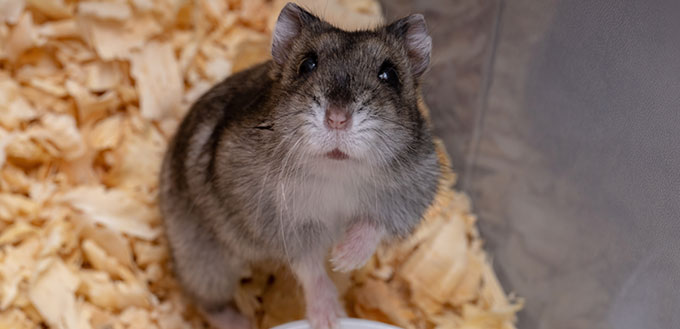
FAQs:
Q: Are dwarf hamsters good pets?
A: Dwarf hamsters are actually considered to be better pets than your typical hamster breeds, owing to the fact that they are generally more sociable than their slightly larger cousins. The key thing to remember if you are thinking of getting a small breed like this is that they are extremely delicate, and so they may not be fitted to some homes. They are fine with children, but it is essential that those children be taught how to handle their hamsters gently and with care.
Q: Do dwarf hamsters like to be held?
A: Like most small creatures, dwarf hamsters are not overly “cuddly” per se, but they are docile and friendly, and so they generally take well enough to be held so long as they are handled with the proper care. There are some that prefer not to be held at all, in which case if you need to remove them from their enclosure for any reason you can use the cup method we have spoken about above.
Q: Do dwarf hamsters bite?
A: This is a surprisingly common question, and the answer is yes if you own a dwarf hamster you are likely to get bitten at least once. This is because hamsters are skittish creatures and can be easily startled, so whilst you are trying to find a rhythm with your new tiny pet, you may find that they nip at you once or twice whilst they’re adjusting. Additionally, dwarf hamsters can bite if they smell food on your skin, if they are especially territorial, or if they are stressed.
Q. Are dwarf hamsters high maintenance?
A: They can have slightly high maintenance personalities on account of their natural hyper-awareness, however, owning a dwarf hamster, in general, is not an overly high maintenance task. They do not take up a lot of space and are easy to clean. The main thing to remember is to keep their housing clear of waste, provide them with plenty of hamster toys and areas to explore, and make sure that they are eating and drinking properly.
Q. What is the average price of a dwarf hamster?
A: They are definitely more on the cheaper side of things when it comes to purchasing a new pet, with the average price of dwarf hamsters being around $20-30. Like any animal, this can depend on the breeder and the species, and some may go for more, but on average you should expect to pay around this amount.
Sources:
- Types of Hamsters, WebMD
- Laurie Hess, DVM, Owning a Pet Hamster, VCA Hospitals
- Is A Hamster The Right Pet For You?, The Humane Society


